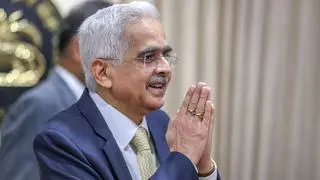If India’s missiles have successfully achieved the fire (Agni) power and long strike distance, credit to a large extent has to go to 62-year-old Avinash Chander.
A dedicated Defence scientist, Chander has been stewarding the country’s long-range Agni ballistic missile programme for a decade. In this period, the successes, especially of Agni V (the inter-continental ballistic missile), have made even China sit up and take serious note of India’s missile-strike capabilities.
Soft-spoken, simple, focussed and committed, Avinash Chander will take over as the Scientific Adviser to the Defence Minister and Director-General of the Defence Research and Development Organisation (DRDO), from Dr V. K. Saraswat today. His appointment for a three-year tenure was announced on Friday in New Delhi.
A firm believer in indigenous technology, Avinash will have his share of challenges, especially with mega projects such as Light Combat Aircraft, Main Battle Tank, Field Gun, AWACS and UAVs suffering delays and cost overruns.
Similarly, pressures from the Defence forces to deliver quality products on time as well as the huge Defence deals in the pipeline with offset clauses will test his managerial skills. Priority, he says, will be for induction of Agni V and Tejas, the Light Combat Aircraft.
Avinash Chander is at present the Chief Controller (R&D) of DRDO in charge of strategic missions. Having joined the DRDO in 1972, he worked his way to the top, making significant contributions to missile and critical technology areas. He served as the Director of the Advanced Systems Laboratory, Hyderabad, which drives the Agni programme.
It is indeed a strange coincidence that the Agni programme has been led by scientists whose names start with ‘A’ — A.P.J. Abdul Kalam, R.N. Agarwal and now Avinash Chander — in its three-decade-long journey, starting from the Integrated Guided Missile Development Programme (IGDMP) in 1983.
An alumnus of IIT Delhi and with an MS in Spatial Information Technology, Avinash Chander was instrumental in integrating several indigenous technologies and materials into the Agni V missile. Launched successfully in 2012, the missile propelled India into the elite club of a few nations with long-range capability.
A recipient of the Padma Shri, Avinash motivated the large team of scientists to overcome glitches that faced Agni III and IV.
Though he has a lot of confidence in the domestic industry, his constant refrain is that quality has to improve considerably and rise up to global standards.
somasekhar.m@thehindu.co.in







Comments
Comments have to be in English, and in full sentences. They cannot be abusive or personal. Please abide by our community guidelines for posting your comments.
We have migrated to a new commenting platform. If you are already a registered user of TheHindu Businessline and logged in, you may continue to engage with our articles. If you do not have an account please register and login to post comments. Users can access their older comments by logging into their accounts on Vuukle.